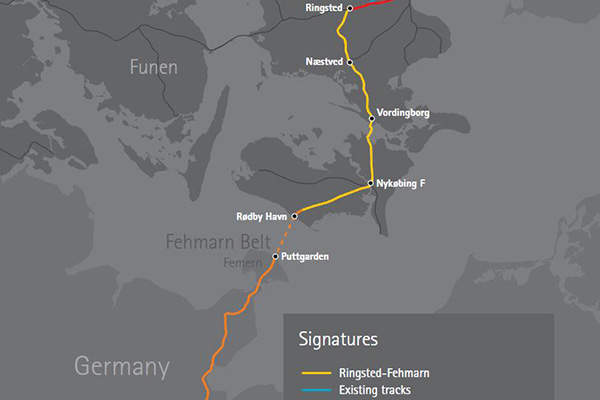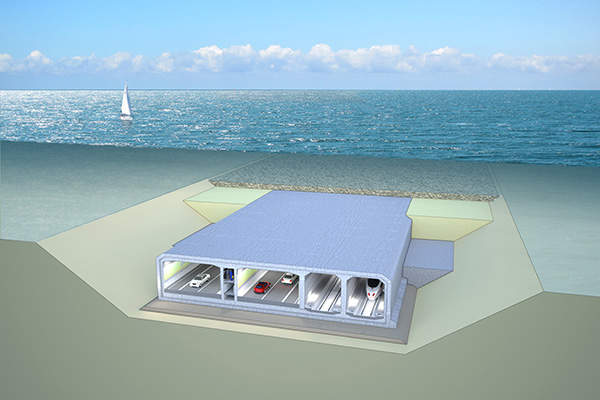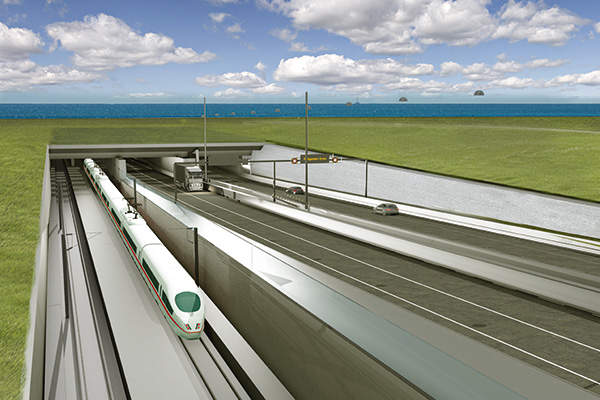The Ringsted-Fehmarn rail link project was initiated by Denmark and Germany to connect the fixed link across the Fehmarnbelt by 2021. The Fehmarnbelt will connect Puttgarden on Fehmarn Island, Germany, with Rødby on the Danish island of Lolland.
The Ringsted-Fehmarn rail link is expected to improve the infrastructure linking Scandinavia to the rest of Europe, and will reduce travel times between Copenhagen and Hamburg. It is expected to provide an effective alternative to road traffic for freight and passenger transportation, as well as reducing CO2 emissions. The project will be operated by Danish state-owned railway company Banedanmark.
The line is estimated to provide 20 passenger train services each day between Denmark and Germany by 2025, compared with six passenger trains currently running per day. Its construction is expected to begin in 2015 and estimated to cost €1.2bn ($1.65bn).
Ringsted-Fehmarn rail link construction
Preparatory works for the Ringsted-Fehmarn line construction are currently underway, while the actual construction is expected to begin in 2015 after ratification by parliament.
First invitation of tenders for the construction of 18 bridges on Lolland-Falster began in 2013. Archaeological surveys, construction of a new platform at Vordingborg station and demolition of buildings began in 2014. The Danish Parliament is expected to pass the Ringsted-Fehmarn construction act in 2015, while German regulatory approval is expected in the first half of 2015.
Shatin to Central Link (SCL) is a 17km-long railway line expansion undertaken by MTR Corporation in Kowloon and Hong Kong Island.
Construction works will include upgrading the track between Ringsted and Vordingborg for 200kmph passenger trains, realignment of the curve and relocation of platforms at Glumsø station, closing the level crossing at Eskilstrup and construction of a new road bridge.
An extra track will be laid alongside the existing one between Vordingborg and south of Holeby, which will be linked to the fixed link across Fehmarn Belt. The old harbour tracks in Vordingborg will be removed, and a double track section will be built over Masnedsund and Masnedø. Other works will involve laying passing tracts at Glumsø, Orehoved and Holeby, and facade insulation of 1,700 homes and businesses along the Ringsted-Fehmarn line to avoid excessive noise.
Existing bridges between Ringsted and Holeby will be demolished or modified. A new concrete bridge with double tracks will be built to the east in place of Bascule Bridge over Masnedsund.
The level crossing at Eskilstrup Vestergade will be closed completely, and a new flyover will be built in its place to connect Eskilstrup Vestergade/Kløvermarksvej to Søndergade/Eskilstrup Nygade.
A new bridge will be constructed to the south of the existing King Frederik IX bridge over Guldborgsund at Nykøbing Falster.
Signalling and communication systems
The Ringsted-Fehmarn line will be installed with a new European ERTMS 2 standard signalling system designed specifically to ensure better punctuality and reliability. The new signalling system will result in fewer delays and more trains running on each line.
The entire section between Ringsted and Holeby will be electrified at 25kV by erecting masts for the catenary cables along the tracks. Traction power supply stations will be built at certain places to supply power to the overhead catenary system.
Contractors and suppliers
NIRAS and Rambøll were awarded a contract to provide detailed design for the expansion and speed upgrade of the railway stretch across Lolland and Falster in May 2013. Rambøll is responsible for providing the design of the Zealand to Ringsted stretch.
The contractual scope includes design of the expansion, reconstruction of two new stations and renovation of 58 bridges including 18 new road bridges, ten new track bridges and 30 existing track bridges.
NIRAS appointed Swedish ÅF, Dutch Witteveen & Bos, Spanish Ineco and LE34 as subconsultants for the project.














